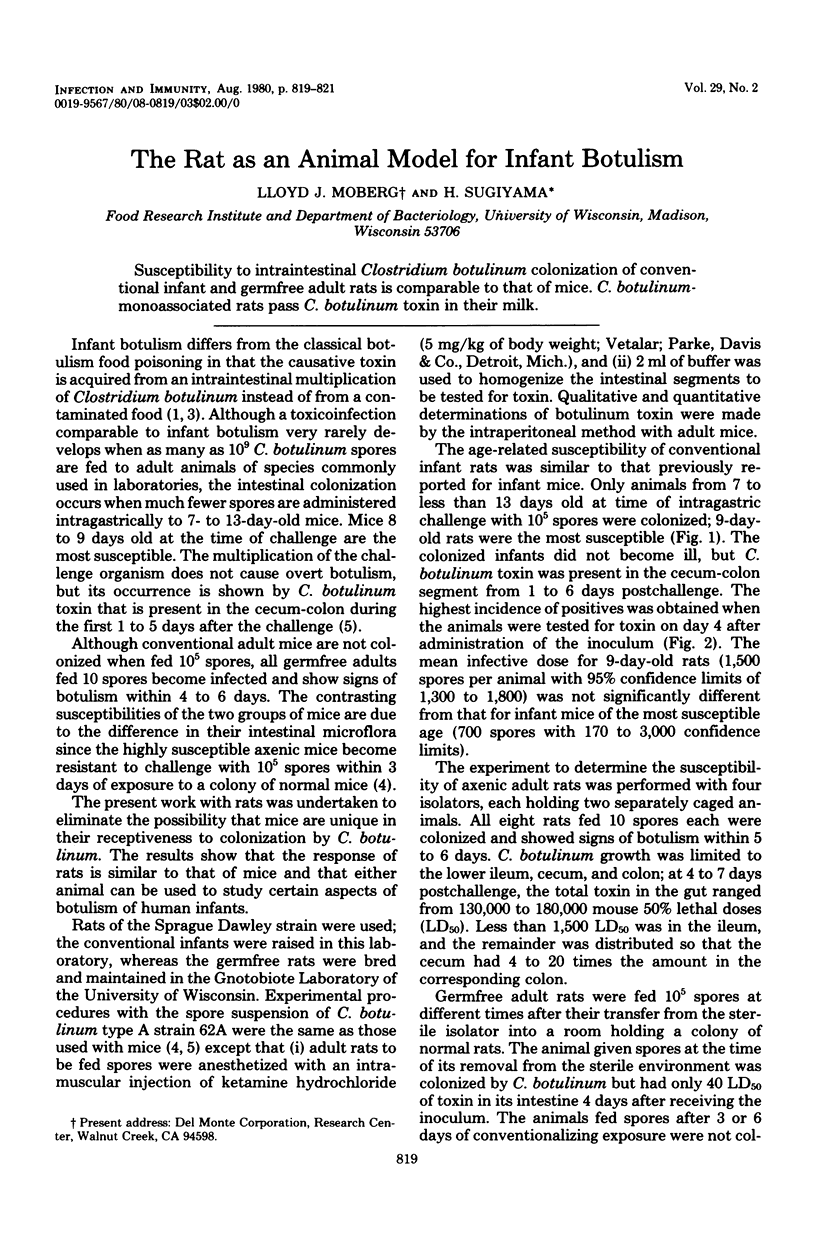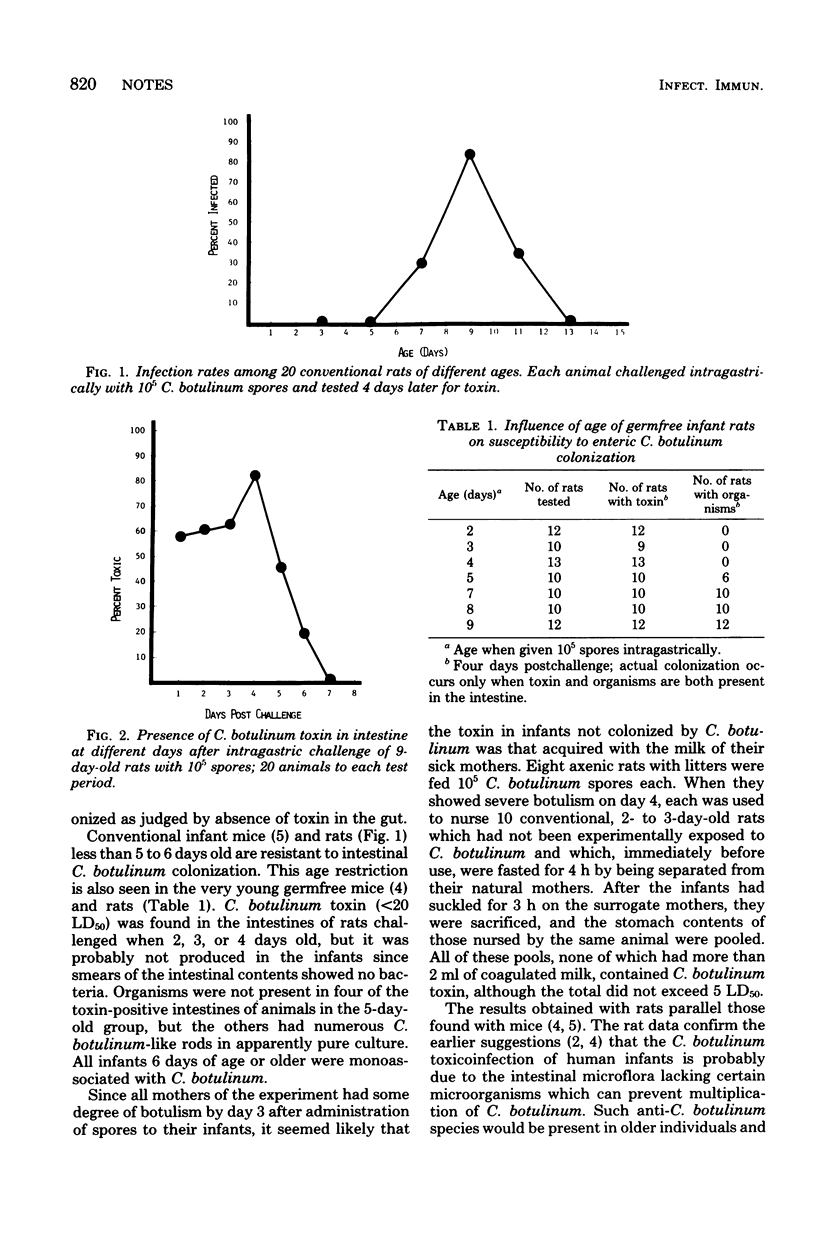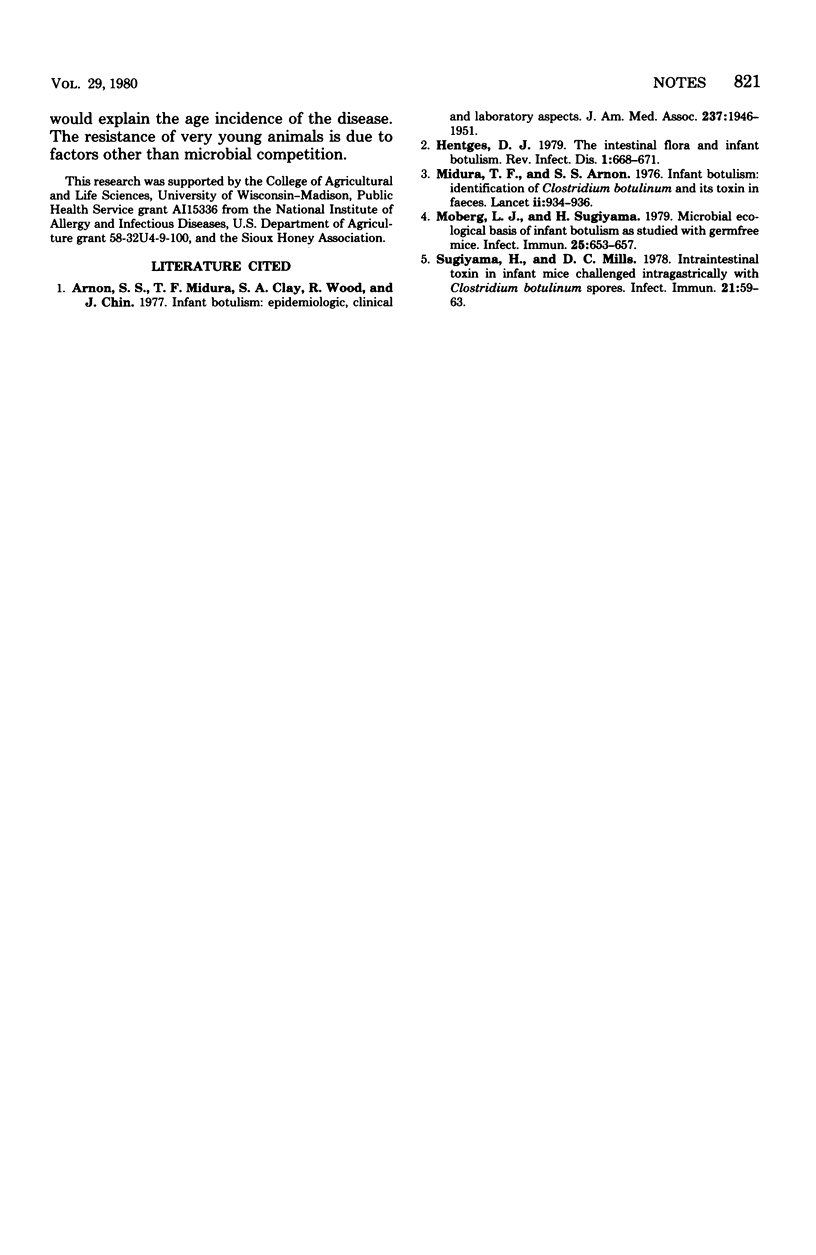Abstract
Susceptibility to intraintestinal Clostridium botulinum colonization of conventional infant and germfree adult rats is comparable to that of mice. C. botulinum-monoassociated rats pass C. botulinum toxin in their milk.
Full text
PDF


Selected References
These references are in PubMed. This may not be the complete list of references from this article.
- Arnon S. S., Midura T. F., Clay S. A., Wood R. M., Chin J. Infant botulism. Epidemiological, clinical, and laboratory aspects. JAMA. 1977 May 2;237(18):1946–1951. doi: 10.1001/jama.237.18.1946. [DOI] [PubMed] [Google Scholar]
- Hentges D. J. The intestinal flora and infant botulism. Rev Infect Dis. 1979 Jul-Aug;1(4):668–673. doi: 10.1093/clinids/1.4.668. [DOI] [PubMed] [Google Scholar]
- Midura T. F., Arnon S. S. Infant botulism. Identification of Clostridium botulinum and its toxins in faeces. Lancet. 1976 Oct 30;2(7992):934–936. doi: 10.1016/s0140-6736(76)90894-1. [DOI] [PubMed] [Google Scholar]
- Moberg L. J., Sugiyama H. Microbial ecological basis of infant botulism as studied with germfree mice. Infect Immun. 1979 Aug;25(2):653–657. doi: 10.1128/iai.25.2.653-657.1979. [DOI] [PMC free article] [PubMed] [Google Scholar]
- Sugiyama H., Mills D. C. Intraintestinal toxin in infant mice challenged intragastrically with Clostridium botulinum spores. Infect Immun. 1978 Jul;21(1):59–63. doi: 10.1128/iai.21.1.59-63.1978. [DOI] [PMC free article] [PubMed] [Google Scholar]


